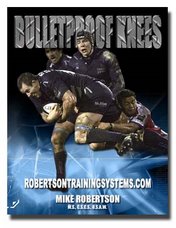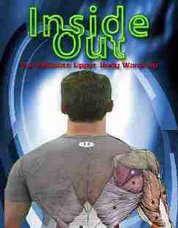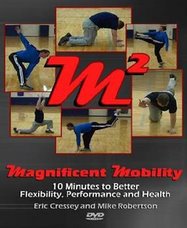In your and Bill Hartman's article "Push ups, face pulls and shrugs for strong and healthy shoulder's" you guys talk about how during a proper and efficient bench press, the scapulae don't really protract and in fact should actually be retracted and depressed. You go on to say that this position is the same position the scapulae are in during the contracted portion of a row, so the idea of horizontal training balance in terms of pushing and pulling isn't as simple as balancing rows with benching. Now with that being said, in BTEA you and Eric include "all bench pressing" in the "scapular protraction" column of "A structural balance crash course, the Upper Body" chart in the powerpoint slides and in opposition to that you include all rowing movements (upright rows excluded) in the "scapular retraction column".
So my questions to you are:
1.) Is the bench press a scapular protraction movement or scapular retraction movement? And if pressing movements like the bench press aren't in fact scapular protraction movements, are there any other movements besides a push up or push up plus that are?
MR: It’s tricky, right? ;)
The bench press is in fact a protraction movement pattern; the problem is, the scapulae never actually protract! So while you’re training the pecs, anterior delts, triceps, etc., you’re never really focusing on the serratus anterior. This is an obvious issue w/the bench press exercise.
Now, with regards to “true” protraction exercises, push-ups are obviously great, but they aren’t your only choice. You can also perform a variety of protraction exercises using a standing cable machine or heavy bands – mix it up by standing with feet aligned and in a split-stance to get more “core” involvement.
2.) I understand that the contracted portion of most rowing movements put the scapulae in a depressed and retracted position but during the other portions of rowing such as on a t-bar or isolateral rowing machine where not much effort is needed to maintain neutral spine, I feel like my scapulae can protract if I allow the weight to take them into that protracted position. Would allowing my scapulae to protract during that portion of the row be in essence training scapular protraction in that phase and scapular retraction in the contracted phase? or since your not actively using your serratus to protract the scapula would you not really be training scapular protraction?
MR: Now you’re thinking man!
I’ve actually just written an entire article on this topic. The goal during all rowing movements should be to allow/control protraction at the start/finish of the movement. By doing this, we allow the rhomboids to relax and stretch, thus ensuring a better contraction during the actual movement. You’ll see quite often where people maintain a small amount of retraction, even at the start/finish – they simply can’t relax into protraction and still complete the movement. This is typical of someone who is dealing with rhomboid dominance and/or scapular downward rotation syndrome.
3.) If performing push up variations are indeed the only way to actively train scapular protraction, then would I be understanding things correctly if i said that balancing rows and push up variations would serve someone better for shoulder health and scapular function then balancing rows and bench press variations?
MR: Yes!
Just remember that our goal is optimal alignment of the upper extremity, and the upper extremity just seems a lot harder to “balance” overall than the lower body. If we’re developing a program for someone that’s already in optimal alignment, it’s much better to try and balance protraction/retraction strength than just focusing on bench presses versus rows.
High Octane Corrective Exercise and Performance Enhancement | www.RobertsonTrainingSystems.com
Showing posts with label Shoulder. Show all posts
Showing posts with label Shoulder. Show all posts
Monday, September 24, 2007
Wednesday, July 25, 2007
The Push-Up Plus: Scapular Winging
Hi Mike,
I purchased Inside-Out and have been working on the push-up plus exercise, among others. I have noticed when I straighten my arm directly in front of me (as though I’m throwing a punch) the winging of the scapula goes away. Would this mean that my serratus anterior works properly and is not the source of my scapular winging OR that my serratus anterior is not correctly activated and that is why I have scapular winging?
If you have significant scapular winging, chances are you have deficiencies in either strength and/or motor control of the serratus anterior. What you describe is normal; many people have appropriate function into protraction, but they have poor eccentric control of the serratus as the scapula moves back into a retracted position. Quite often when you perform push-ups people have no issue with the concentric movement, but struggle considerably and/or get pain when lowering into the bottom.
Focus on “pulling” the shoulder blades together on the eccentric portion of push-ups, along with keeping your shoulder blades tight to the rib cage. If you can’t perform traditional push-ups properly, you may have to perform them on your knees or even in a power rack until you can achieve proper scapular control.
Good luck!
MR
Inside-Out: The Ultimate Upper Body Warm-Up
Labels:
Exercises,
Inside-Out,
Mike Robertson,
Shoulder
Tuesday, July 10, 2007
The Source of Scapular Winging
Hi Mike,
I purchased Inside-Out and have been working on the push-up plus exercise, among others. I have noticed when I straighten my arm directly in front of me (as though I’m throwing a punch) the winging of the scapula goes away. Would this mean that my serratus anterior works properly and is not the source of my scapular winging OR that my serratus anterior is not correctly activated and that is why I have scapular winging?
If you have significant scapular winging, chances are you have deficiencies in either strength and/or motor control of the serratus anterior. What you describe is normal; many people have appropriate function into protraction, but they have poor eccentric control of the serratus as the scapula moves back into a retracted position. Quite often when you perform push-ups people have no issue with the concentric movement, but struggle considerably and/or get pain when lowering into the bottom.
Focus on “pulling” the shoulder blades together on the eccentric portion of push-ups, along with keeping your shoulder blades tight to the rib cage. If you can’t perform traditional push-ups properly, you may have to perform them on your knees or even in a power rack until you can achieve proper scapular control.
Good luck!
Mike Robertson
Key #1: Improve and Maintain Thoracic Spine Mobility
The mobility of the upper back, or thoracic spine, especially in regard to achieving sufficient upright posture directly affects the ability to properly position the scapulae (the shoulder blades) during upper body training. Poor scapular positioning can actually weaken the rotator cuff muscles and limit how much weight you can lift, limit arm speed, and limit striking power. Rounded back or slouched posture of the upper back prevents the normal movement and positioning, increasing the likelihood of impingement of the rotator cuff. Repetitive “pinching” of the rotator cuff in this case will result in inflammatory or degenerative conditions or even rotator cuff tears.
Subscribe to:
Posts (Atom)








